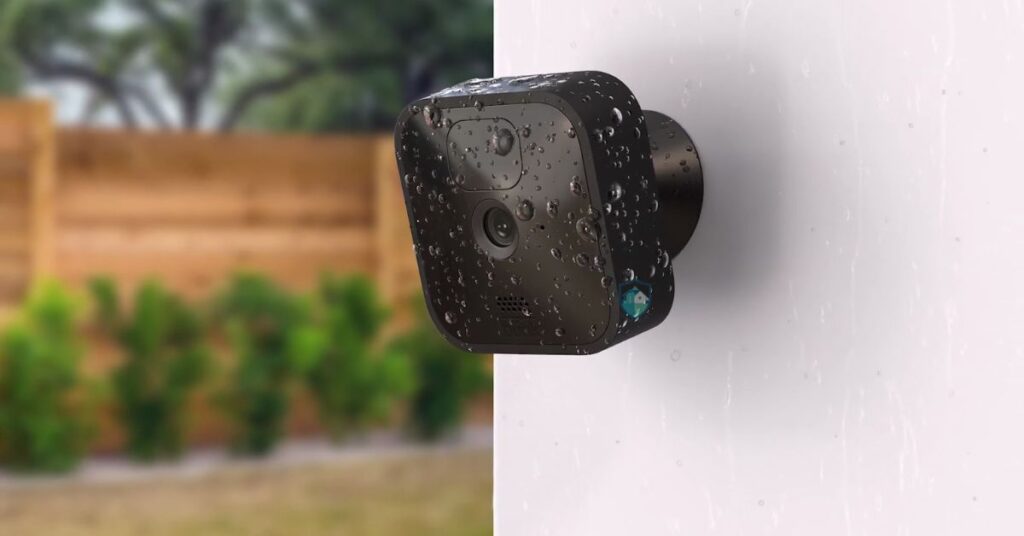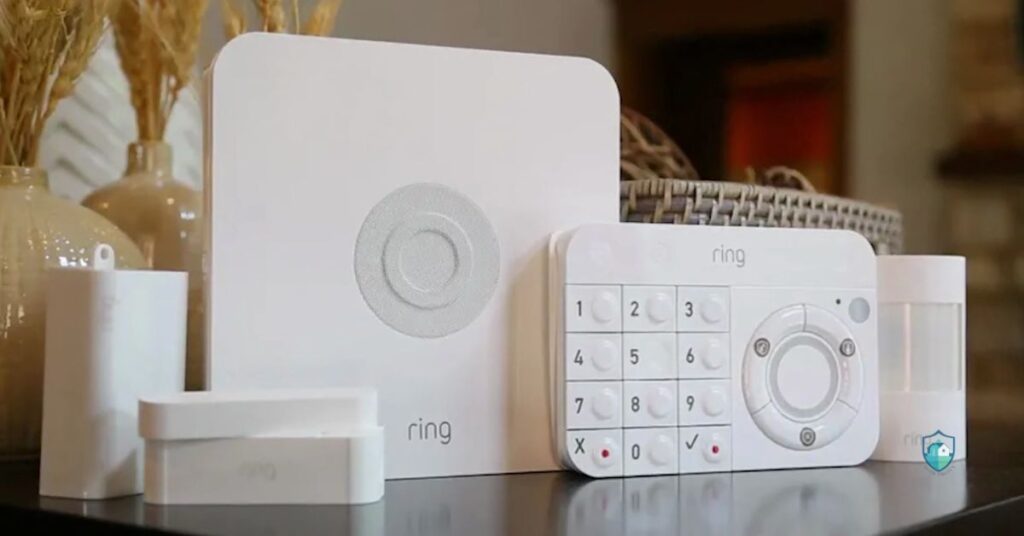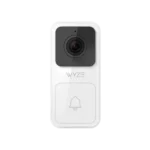Table of Contents
Are you torn between Blink vs Ring Pros and Cons for your home security camera needs? The answer isn’t so straightforward.
As a mother of two young kids, ensuring their safety is my top priority. I remember the heart-wrenching moment when my 4-year-old wandered out of the house unnoticed.
Fortunately, a neighbor found her, but that terrifying experience made me realize the importance of a reliable home security system.
After extensive research and consulting with security experts, I learned that both Blink and Ring offer excellent features catering to different needs.
In this comprehensive guide, I’ll explain the pros and cons of each system, helping you make an informed decision tailored to your unique circumstances.
Here we go.
What Is Blink?
Blink is a line of battery-powered smart security cameras owned by Amazon. Key features of Blink cameras include:

- No monthly fees required (optional cloud storage available)
- Wire-free installation using included battery or AA lithium batteries
- Live View video monitoring via the Blink app
- Motion detection with customizable activity zones
- Two-way audio to listen and talk
- Weatherproof design for indoor/outdoor use
Blink offers a variety of camera models like the Blink Outdoor, Blink Indoor, Blink Mini, and the all-in-one Blink Video Doorbell. You can mix and match cameras on the same system.
What Is Ring?

Ring is another major player in the smart home security space, also owned by Amazon. Key capabilities of Ring cameras include:
- Optional cloud storage subscriptions like Ring Protect Plans
- Battery, wired, or solar-powered options
- Advanced motion detection and customizable motion zones
- Two-way audio with noise cancellation
- Night vision and color night vision (on select models)
- Weather-resistant designs suitable for indoor/outdoor placement
Ring has an extensive product lineup featuring the Stick Up Cam, Spotlight Cam, and various Video Doorbells like the Ring Video Doorbell Pro 2. Their affordable Alarm Security Kit bundles cameras with other sensors.
Blink vs Ring Cameras: Head-to-Head Comparison
To help you decide between Blink and Ring, let’s take a closer look at how their core camera features stack up:
| Feature | Blink | Ring |
|---|---|---|
| Video Quality | Up to 1080p | Up to 1080p |
| Field of View | Up to 110° diagonal | Up to 180° diagonal |
| Night Vision | Infrared | Infrared or Color Night Vision |
| Motion Zones | Yes | Yes, with Ring Protect Plan |
| Person Detection | No | Yes, with Ring Protect Plan |
| Two-Way Audio | Yes | Yes, with noise cancellation |
| Local Storage | With Blink Sync Module 2 | No |
| Continuous Recording | No | Yes, with Ring Protect Plan |
| Smart Home Integration | Alexa, Google Assistant | Alexa |
Both Blink and Ring deliver solid video quality up to 1080p HD resolution. However, Ring cameras tend to have a wider field of view.
Ring also has an edge when it comes to advanced detection features like person-only alerts and color night vision – but these perks require a paid Ring Protect subscription.
Cost & Affordability
One of Blink’s biggest advantages is its affordability and lack of required monthly fees. A single Blink Outdoor Camera costs around $100, while the Ring Stick Up Cam Battery is $99.99.
But Ring cameras require a Ring Protect Plan for most premium features, which adds $3.99 to $10 per month.
Here’s a quick cost breakdown for some basic Blink and Ring setups:
| System | Upfront Cost | Monthly Cost |
|---|---|---|
| 1 Blink Outdoor + Sync Module 2 | ~$140 | $0 |
| 1 Ring Stick Up Cam Battery + Ring Protect Basic | ~$140 | $3.99/month |
| 3 Blink Outdoor Cameras + Sync Module 2 | ~$300 | $0 |
| 3 Ring Stick Up Cams + Ring Protect Plus | ~$300 | $10/month |
As you can see, Blink systems can be significantly cheaper over time if you’re OK with missing some premium features.
But if you want those smart alerts and continuous recording, a Ring Protect subscription is well worth the cost for many users.
Cloud Storage & Smart Features
All Ring cameras require a Ring Protect subscription to access video recordings in the cloud and unlock premium features like:
- Person detection
- Package detection
- Motion zones and smart alerts
- Continuous recording
Without a subscription, you can still view the live camera feed but won’t get event recordings saved to the cloud.
Blink cameras don’t mandate any monthly fees. You get basic cloud storage for clip recordings when motion is detected. There’s no person detection, but you can adjust motion sensitivity and set up activity zones.
To enable local video storage and continuous recording, just add the Blink Sync Module 2 (sold separately for $34.99). This plugs into your router to store unlimited camera footage locally on a USB drive.
Smart Home Compatibility
Both Blink and Ring cameras work with Amazon Alexa for voice commands and integration with smart displays like the Echo Show. Blink cameras can also connect with the Google Assistant ecosystem.
If you use HomeKit and other Apple smart home products, neither Blink nor Ring officially supports HomeKit at this time.
However, there are some workarounds to connect both camera systems to HomeKit using third-party apps and services.
Video Doorbell: Blink vs Ring
For a dedicated video doorbell, Blink offers the Blink Video Doorbell while Ring has several models like the Ring Video Doorbell Pro 2. Some key differences:
- The Blink doorbell is battery-powered only, while Ring offers battery or wired versions
- Ring doorbells have interchangeable faceplates in various finishes
- Ring provides crisper Head-to-Toe video with a 1:1 aspect ratio
- Blink lacks advanced detection like package alerts and pre-roll video preview
In general, Ring doorbells provide a more seamless integration with their cameras and subscription services. But Blink’s video doorbell is easier on the wallet at $49.99 vs Ring’s starting price of $99.99.
Blink vs Nest: How Do They Compare?
Another major player in the smart home camera space is Google Nest, known for products like the Nest Cam Battery and Nest Doorbell Battery.
Compared to Blink, Nest cameras are more expensive but offer tighter integration with Google smart home services and no required fees. Key Nest features include:
- Person, vehicle, animal, and package detection
- 3 hours of free event video history
- Optional Nest Aware plans from $6/month with 30-60 day video histories
- Wide 130° field of view
- Google Assistant/Home app integration
Compared to Ring, Nest cameras cost more upfront but come with no mandatory monthly fees for basic functionality. Ring also has an edge in advanced detection alerts.
Overall, Blink and Ring remain two of the most affordable options for smart home security cams, especially for larger multi-camera setups.
But Nest provides stiff competition in premium video intelligence and Google smart home integration.
Blink vs Ring Subscription Plans
To get continuous video recording and AI detection on Ring cameras, you’ll need to sign up for a Ring Protect plan:
- Ring Protect Basic: $3.99/month or $39.99/year, covers one doorbell or camera
- Video recording for 60 days
- Person detection
- Package detection
- Rich video notifications
- Ring Protect Plus: $10/month or $100/year, unlimited camera/doorbell coverage
- All Basic features
- Extended warranty
- 10% ring.com discount
Without a subscription, Ring cameras can still livestream video and capture motion-activated clips – but cloud recordings only last around 60 days on a rolling basis.
On the Blink side, no subscriptions are required for the basic service. But the free cloud storage only keeps events for up to 1 year on a rolling basis.
To unlock continuous recording on Blink, you’ll need their Blink Sync Module 2 which enables local storage to a USB drive plugged into your router.
The Sync Module 2 is a one-time purchase of $34.99. From a cost perspective, it pays for itself relatively quickly compared to ongoing Ring Protect fees if you have multiple Blink cameras.
Is a Subscription Worth It?
For casual Blink users just wanting basic motion monitoring, the free cloud service may be enough.
But for more robust security and intelligence features, a Ring Protect plan is highly recommended to take full advantage of Ring’s capabilities like:
- Advanced motion detection and tracking
- Person-only and package alerts
- Richer notification content
- Longer video histories
- Extended warranty (Plus plan)
Even the $3.99/month Ring Basic plan can be very valuable if you want intelligent alerts and don’t mind the 60-day video limit. The $10/month Plus plan is ideal for whole-home coverage across unlimited Ring devices.
Installation & Setup: Blink vs Ring
Both Blink and Ring make installation very straightforward and user-friendly, especially for their battery-powered wire-free cameras.
Most models just require a few simple steps:
- Unbox and charge/insert batteries into the camera
- Use the Blink or Ring app to create an account and add a location
- Scan the QR code on the device to sync it
- Follow the guided instructions to set up WiFi, mount the camera, and adjust settings
The actual mounting process is typically just adhering or screwing the provided mounts to a wall or surface, then clicking the camera in place.
For wired cameras and video doorbells, professional installation may be required to connect to existing doorbell wiring and adequately power the devices. But Blink and Ring provide good DIY tutorials for handy homeowners.
Solar panels are available for Ring’s Stick Up Cam and Spotlight Cam models if you don’t want to deal with recharging batteries. Blink doesn’t currently offer solar-powered cameras.
Overall, both brands make setup pretty painless regardless of skill level. Just follow the step-by-step guidance in their respective mobile apps.
Smart Home Integration & Voice Control
When it comes to voice commands and smart home control, both Blink and Ring play nicely with Amazon Alexa. You can view live camera feeds hands-free by asking Alexa, as well as control recording, arm/disarming, and more.
For example, just say:
- “Alexa, show my [Camera Name]”
- “Alexa, talk to Blink/Ring”
- “Alexa, arm/disarm Ring Alarm”
Blink cameras also have official integration with the Google Assistant platform, allowing voice commands via Google Home products.
Neither Blink nor Ring provide native support for Apple HomeKit or Siri controls at this time.
However, you can use workarounds like the $4.99/month Homebridge service to unofficially connect both camera systems to HomeKit.
Outdoor, Indoor, & Floodlight Cameras
Here’s a quick rundown of the most popular indoor and outdoor camera options from Blink and Ring:
Blink Outdoor & Indoor Cameras
- Blink Outdoor ($99.99) – Water-resistant, battery-powered, 1080p, 110° view
- Blink Indoor ($79.99) – Non-weatherized indoor version with optional wired power
- Blink Mini ($34.99) – Compact plug-in 1080p indoor cam, no battery
Ring Outdoor & Indoor Cameras
- Ring Stick Up Cam Battery ($99.99) – 1080p, 115° view, wired or battery-power
- Ring Indoor Cam ($59.99) – Simple affordable 1080p indoor camera
- Ring Floodlight Cam Wired Pro ($249.99) – Dual LED floodlights, 1080p, 140° view
In the outdoor arena, Ring offers more high-end options like the Floodlight and Spotlight Cams which combine cameras with motion-activated lights.
But Blink provides a quality battery-powered solution that’s easier to setup without wiring runs.
For basic indoor coverage, both companies have very affordable 1080p cam options around $60-$80. Ring’s Indoor Cam is a no-frills wired pick, while Blink’s Indoor camera can run on batteries.
Video Quality & Night Vision
In terms of video quality during the day, both Blink and Ring deliver a clear 1080p HD resolution up to 30fps.
Images look crisp and detailed enough to identify people, vehicles, and read text from a reasonable distance.
Where Ring tends to have an edge is in its wider camera fields of view up to 180° diagonal on some models. Blink typically caps out around 110°.
At night, both brands utilize infrared LED night vision for black and white viewing in low-light conditions.
However, Ring’s more premium cameras like the Spotlight Cam and Floodlight Cam also offer color night vision using ambient lighting and LED spotlights/floodlights.
This color night vision can provide better context and detail compared to standard monochrome night vision. But the infrared black and white mode is still effective for basic nighttime visibility on both camera systems.
Blink vs Ring: Security Integrations
For a comprehensive smart home security solution, Ring cameras can be seamlessly combined with Ring’s Alarm Security Kits.
These bundle video cameras with sensors for doors, windows, motion, smoke, carbon monoxide, and more.
Everything integrates into Ring’s unified interface and monitoring service. You can self-monitor and arm/disarm the system, while features like 24/7 professional monitoring require an additional Ring Protect Pro subscription starting at $20/month.
Blink doesn’t directly manufacture alarm sensors or security systems. But Blink cameras can integrate with and trigger compatible smart home security platforms like SmartThings, Alexa Guard, Ring Alarm, and Scout Alarm when events like motion are detected.
So while Blink lacks an end-to-end security solution, the cameras can still complement separate third-party systems. Just note the integrations are more limited versus using an all-Ring system.
Local Storage vs. Cloud Recording
One area where Blink has a distinct advantage is the option for local video recording and storage.
With the Blink Sync Module 2, you can continuously record camera footage to a USB drive connected to your home network – no cloud required.
This provides unlimited rolling video storage without any monthly fees or Internet uploads. The video files are locally accessible via the Blink mobile app or web portal.
Ring cameras have no built-in local video storage capabilities. All recordings are sent to Ring’s cloud servers which get deleted after a set period unless you have an active Ring Protect subscription plan.
So for users wanting to avoid the cloud entirely and retain full control over their video data, the local storage angle gives Blink a leg up.
Just note that local recording still requires the sync module purchase up front.
On the flip side, Ring’s cloud-based video infrastructure is powered by Amazon Web Services for robust security and offsite redundancy that a local USB solution can’t match.
It’s really a matter of personal preference on how you want your video footage to be stored.
Bundled Accessory Availability
Both Ring and Blink offer complementary accessories for their respective camera systems if you want to expand functionality:
Ring Accessories
- Ring Solar Panel – Powers cameras without battery changes
- Ring Video Doorbell Wired – Easy integration with other Ring devices
- Ring Alarm Security Kit – Includes base station, keypad, sensors
- Ring Chime Pro – Extends Ring’s Wi-Fi range and sounds audio alerts
The Ring Chime Pro can be very useful if you have poor Wi-Fi coverage in certain areas of your home, impacting camera performance. It essentially acts as a range extender specifically tuned for Ring device connectivity.
Ring also offers accessory solar panels that trickle charge the battery in outdoor cameras and doorbells, eliminating the need to periodically remove and recharge batteries.
Blink Accessories
- Blink Outdoor Mount ($19.99) – Adjustable mounting stand
- Blink Indoor Mount ($9.99) – Camera stand for tabletop placement
- Blink Sync Module 2 ($34.99) – Enables local video storage to USB
- Blink Mini Door Bell ($34.99) – Pairs with Blink cameras to trigger recordings
- Wyze Cam Pan Integration – Can link Blink to monitor Wyze cameras
While Blink’s accessory lineup is more limited, a few key options include the Sync Module 2 for enabling local recording, indoor/outdoor mounts for positioning cameras, and the Mini Doorbell to make regular Blink cams perform like video doorbells.
The Blink XT home security system components are also compatible with newer Blink cameras for a more comprehensive smart home monitoring solution.
Privacy & Security Considerations
Since both Blink and Ring are owned by Amazon, there are some similarities in how they approach user data privacy and security:
- Encrypted video streams and cloud storage
- Option to disable audio recording on cameras
- Two-factor authentication logins
- Access logs to review device activity
Ring has faced some controversies around potential security vulnerabilities with third-party software integrations in the past.
However, the core Ring services and infrastructure follow Amazon’s security best practices.
Blink touts bank-level encryption for all video streams, and stores video recordings in the Amazon Web Services cloud which has robust security certifications.
For users extra-conscious about privacy, Blink’s local recording abilities allow you to store video entirely off the cloud and only access it within your local network.
With either system, it’s advisable to follow security hygiene like using strong unique passwords, enabling two-factor auth, and routinely auditing devices/accounts that have access to your video feeds.
So Which Is Better: Blink or Ring?
At the end of the day, there’s no definitive “better” between Blink and Ring. Each has pros and cons that may appeal to different users:
Pick Blink if:
- You want an affordable no-subscription camera system
- Local recording to USB is important
- Integrations with Google Assistant/Google Home matter
- You don’t need AI detection or continuous recording
Go with Ring if:
- You want premium AI detection like person alerts
- Plan to pay for a Ring Protect subscription anyway
- Desire tighter integration with Ring’s security systems/sensors
- Color night vision, wide fields of view, or solar options are priorities
Many users actually deploy a mixture of Blink and Ring cameras throughout their home based on specific needs for each area or use case. The two systems can co-exist on the same network and Alexa smart home setup.
Ultimately, both Blink and Ring offer very capable yet affordable smart home security camera solutions with regular updates and improvements from Amazon. Focus on which specific features align best with your monitoring needs and budget.




